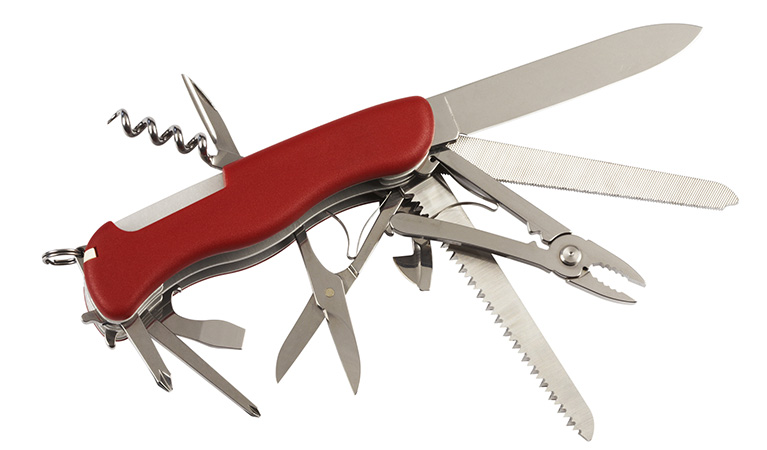
Enterprise user experience (UX) is software designed for employees, not consumers. For the users, it’s often seen as clunky, convoluted, and hard to understand. Employees feel frustration because they must use the software to work, but can find it difficult to navigate. Employers hold on to outdated technology because replacing it sounds too expensive and they fear implementation might slow production. UX gives designers a chance to make life better for large groups of people, but it takes time and hard work. Here’s why enterprise UX is so hard.
It Involves Multiple Tools
Enterprise UX is a term applied to any software used by employees. Examples are:
- Human resources portals
- Content management systems
- Apps for tracking inventory
- Proprietary software
- Intranet sites
A lack of continuity and integration among tools causes employee frustration. Each system has its quirks, and when none of them works well, employees feel as though they’re switching from one poorly designed system to the next. Constant frustration leads to fatigue.
Once a company grows beyond 25 employees, UX consistency becomes a problem. When similar elements look and behave differently from one application to the next, each program is harder to learn, there’s more confusion, and users waste time and money.
Large companies tend to think of software simply as a means to an end. As long as it works and data is accessible, they don’t see the benefit in investing in improving user experience. Why pay to fix it if it isn’t broken?
Designers must explain the benefits of improved user experience in terms businesses can understand. For large enterprises, the benefit of better UX is improved speed. If the software is more flexible, adaptable, and quick to update, the entire company works more efficiently.
Experience is Hard to Measure
There are no metrics for emotional response. It’s easy to list an application’s features and give that list to management. When employees receive training and are able to use systems successfully, everything seems to work fine. If there are frustration and fatigue from poorly designed applications, it isn’t reflected in any data.
However,
companies are run by people, so emotional value is critical to success. Unhappy employees are less productive. They feel defeated instead of fulfilled and are more likely to seek employment somewhere else. When they are provided with the right tools, they work quickly and efficiently and feel empowered.
Experts recommend helping companies shift toward a mindset that values user experience. Help developers change how they approach problem-solving. Techniques such as rapid prototyping and design studios can help them envision more effective solutions.
Gather designers and developers to conduct usability tests such as contextual interviews and field studies. See how the product works outside the design studio and address inconsistencies one at a time. Use this progress to establish stakeholder trust and address larger issues.
Designers Get Stuck with Legacy Technology
It would be nice to start from scratch and design the most effective solution, but most of the time this isn’t feasible. In the 2017-2018 Enterprise UX Industry Report, legacy technology issues were one of the biggest challenges – 61 percent of respondents said it was a challenge when the company had 500 or more employees.
Large companies tend to use outdated computer systems, application programs, or other technology, but so do firms with between 26 and 100 employees. With smaller companies, 33 percent of respondents said the same thing.
Some legacy systems were around even before user design was a thing. Employees may have been using them for so long they don’t want to let go. Sometimes they can be redesigned. Other times you will have to find ways to work around the issues.
If you’re redesigning legacy technology, expect resistance to change. Get user feedback to find out what users like and what they dislike about the old system. If you can provide popular features and straighten out what was convoluted, you build goodwill and improve user experience.
Attend UX events to stay on top of ways to make the user experience more impactful. Professionals from a variety of fields can help improve understanding of user experience from a variety of angles.
Executives Aren’t Users
UX should be designed for the user, not the client. The problem is, it can be hard getting access to users.
Executives choose software systems and approve designs. They just want to get from point A to point B in the shortest distance possible. They won’t be using the software themselves. Designers must go through multiple layers of management to get to the employees who will use the final product.
The manager of apps development at a Boeing company recommends putting in the time it takes to get to end-users. He suggests getting approval from the UX team’s management, from the project manager, and from customer management. After getting approval, conduct focus groups to build better products with feedback.
Unfortunately,
End-users are often hard to reach because they’re busy doing their jobs. They’re under pressure to meet their own deadlines, so they don’t have a lot of time to get involved with software development. Communicate with functional managers so they can free up time to provide user feedback in a stress-free environment.
Gain plenty of information about potential users. Obtain user feedback and analytics to better understand their current experience. Talk to everyone with an interest in the experience and communicate your findings to stakeholders.
When designing for the end-user, your design strategy should include:
- Clearly defined goals for the user experience
- Documentation of the features, functionality, and content that will support those goals
- A process for testing design throughout the development
- Planning that connects the business’s objectives with user needs
It’s Hard for Users to Take Risks
Fear of failure is powerful; fear of losing your job is even more so. If you’re asking employees to stop doing something the way they’ve been doing it for years, they’re going to be nervous. People feel secure when things are familiar. When you change outdated software, you introduce something unfamiliar.
Learning new systems takes time. Many people feel at first as if it slows them down to learn new technology. Empathize with users as you begin to implement change.
Lack of Executive Buy-In
Sometimes there’s no common language between executives and designers. If you’re not in the field, UX strategy can be hard to grasp. Designers don’t understand all the business reasons for a project, and executives don’t understand the creative process. Both sides have concerns about their own timelines and budgets, so they bring their own stresses to the table.
With UX design, improve relationships and build understanding by:
Teaching each other. Have both sides sit down for brown bag lunch sessions where each side shares information about his or her field. Build natural rapport and exchange knowledge so both sides are more effective.
> Doing your homework
Study your company’s culture and processes to identify unmet needs. Use your insight to innovate employee experience.
> Speaking their language
When you have design concerns, think about what motivates stakeholders to action. They might not care so much about employee emotional response but are highly motivated by content that emphasizes a call to action and improves conversions.
> Communicating your company’s goals
Create a style guide that explains your company’s goals, strategies, and consistent design philosophy. This standardizes company principles for your team and communicates them to potential employers.
Many players are looking out for their own interests
Users are under pressure to get their work done. Functional managers are under pressure to improve their team’s productivity.
IT departments want their own requirements met for enterprise resource planning systems. They’re rewarded for new technology but not necessarily impacted by user experience. IT consultants want to present themselves as experts, but usually, don’t perform any type of user-centered analysis before selling new systems.
Product management has broad knowledge, but little insight into individual organizations. Development teams are encouraged to deliver new features and functionality, but there’s little emphasis on user experience.
Improving dialogue can help everyone involved bring their goals into alignment. Design professionals should consider developing an outreach program for executives to explain how poor usability impacts worker satisfaction. When the people buying the software understand user experience affects profit margins, they will begin to prioritize Enterprise UX design.
The post Enterprise UX: The Struggle is Real first appeared on Web Design & Digital Marketing Tips.






